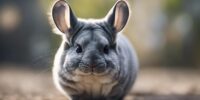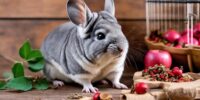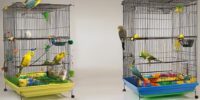What Are the Genetic Traits of Chinchillas That Affect Fur Quality?
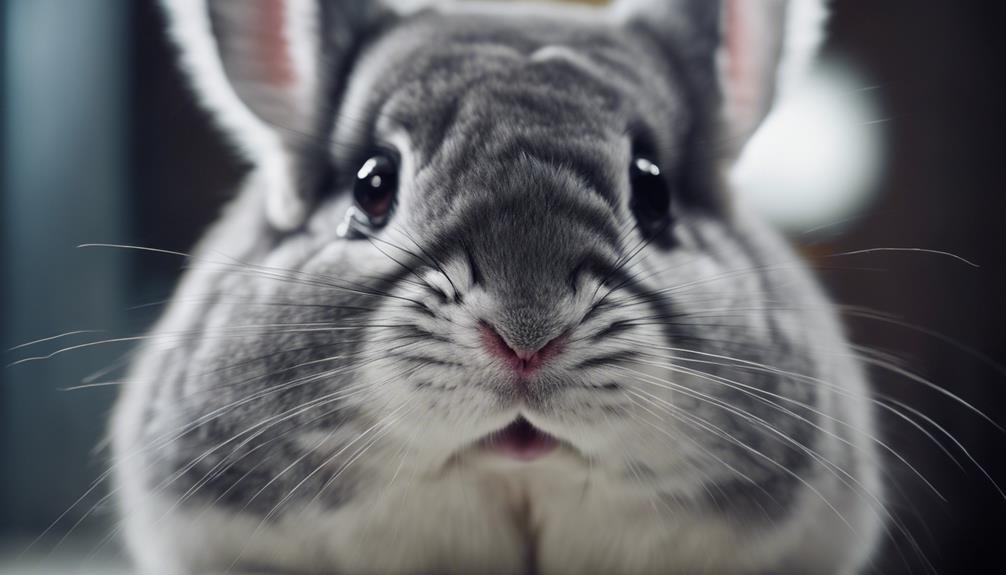
Genetic traits like coat color genetics, fur density variations, and the balance between undercoat and guard hairs significantly impact the quality of a chinchilla's fur.
Understanding these traits is crucial for enhancing chinchilla fur quality.
Coat Color Genetics
The coat color of chinchillas is determined by specific genetic factors that control the production of pigments in their fur. Pigment inheritance plays a crucial role in determining the color patterns observed in chinchillas. Different genes are responsible for the expression of specific coat hues, leading to the wide variety of colors seen in these animals.
Chinchillas possess genes that dictate the production of eumelanin and pheomelanin, the two main types of pigments responsible for coloring their fur. The interaction between these pigments and how they're distributed across the chinchilla's body result in distinct coat color patterns. Factors such as gene expression levels and interactions between different genes influence the final coat color of chinchillas.
Understanding the genetic basis of coat color in chinchillas can aid breeders in selectively breeding for specific color traits. By comprehending the intricate mechanisms of pigment production and inheritance, breeders can work towards producing chinchillas with desired coat colors while maintaining genetic diversity within populations.
Fur Density Factors
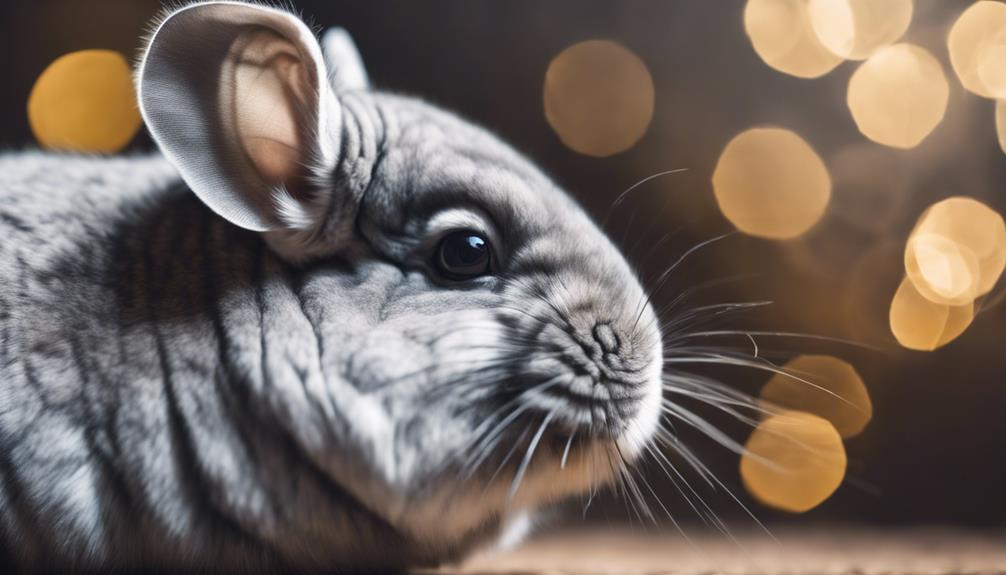
Fur density in chinchillas is influenced by genetic factors that regulate the growth and distribution of hair follicles across their bodies. The texture variations and coat thickness genetics play a crucial role in determining the density of chinchilla fur. Breeders often aim to enhance fur density through selective breeding strategies that focus on fur color inheritance and specifically breeding for density. By understanding the genetic underpinnings of coat thickness, breeders can selectively pair chinchillas with desired fur density traits to produce offspring with denser fur coats.
The genetic factors that control fur density are complex and involve multiple genes that interact to determine the overall thickness and fullness of the chinchilla's coat. Through careful breeding practices and genetic selection, breeders can influence the fur density of chinchillas to meet specific standards and preferences. By focusing on fur texture variations and coat thickness genetics, breeders can work towards producing chinchillas with high-quality fur that's both visually appealing and functional in terms of providing warmth and protection.
Hair Length Gene Variants
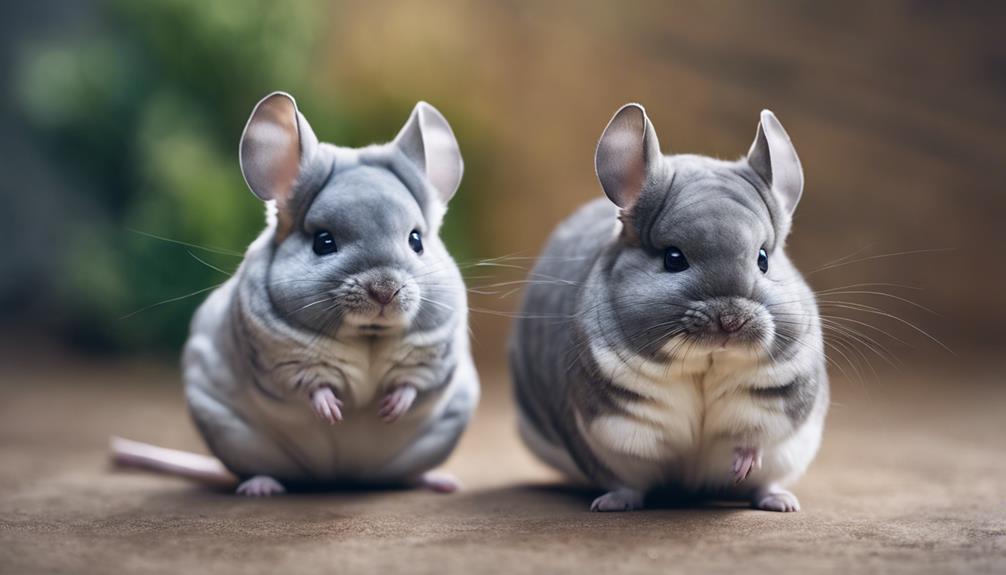
Exploring the various gene variants affecting chinchilla hair length reveals a complex interplay of genetic factors influencing the development and maintenance of coat length. Understanding the genetic basis of hair length in chinchillas is crucial for breeders and enthusiasts aiming to enhance fur quality.
Some key points to consider include:
- Fur Texture Variations: Different gene variants can result in varying fur textures, from soft and dense to coarse and sparse, impacting the overall appearance and feel of the coat.
- Inheritance Patterns: The inheritance of hair length traits in chinchillas follows specific patterns, such as dominant or recessive inheritance, affecting how these traits are passed down from one generation to the next.
- Genetic Mutations: Mutations in specific genes can lead to alterations in hair length, potentially causing anomalies in fur development.
- Selective Breeding: Breeders often utilize knowledge of hair length gene variants to selectively breed chinchillas with desirable fur qualities, aiming to improve overall fur texture and length in subsequent generations.
Undercoat Vs. Guard Hair
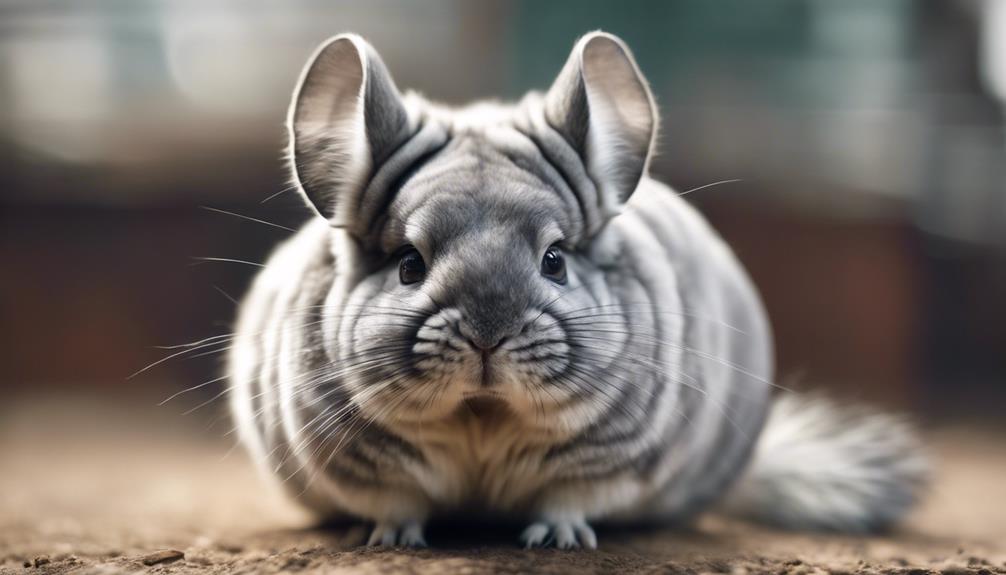
Notably, distinguishing between undercoat and guard hair in chinchillas is crucial for understanding the intricacies of their fur composition and quality. The undercoat is the soft, dense layer of fur closest to the skin, providing insulation and warmth. It's responsible for the plush feel and superior insulating properties of chinchilla fur. On the other hand, guard hairs are longer, coarser, and provide protection from elements such as moisture and sunlight.
Fur texture and thickness are dependent on the balance between the undercoat and guard hairs. Chinchillas with a well-developed undercoat will typically have softer and more luxurious fur, while those with thicker guard hairs might exhibit a coarser texture. Coat color and pattern are also influenced by the distribution and quality of these two types of hair. The undercoat often contributes to the color intensity, while guard hairs can affect the overall appearance and shine of the fur.
Understanding the dynamics between undercoat and guard hair is essential for maintaining the high fur quality that chinchilla enthusiasts admire.
Molting Patterns Influence
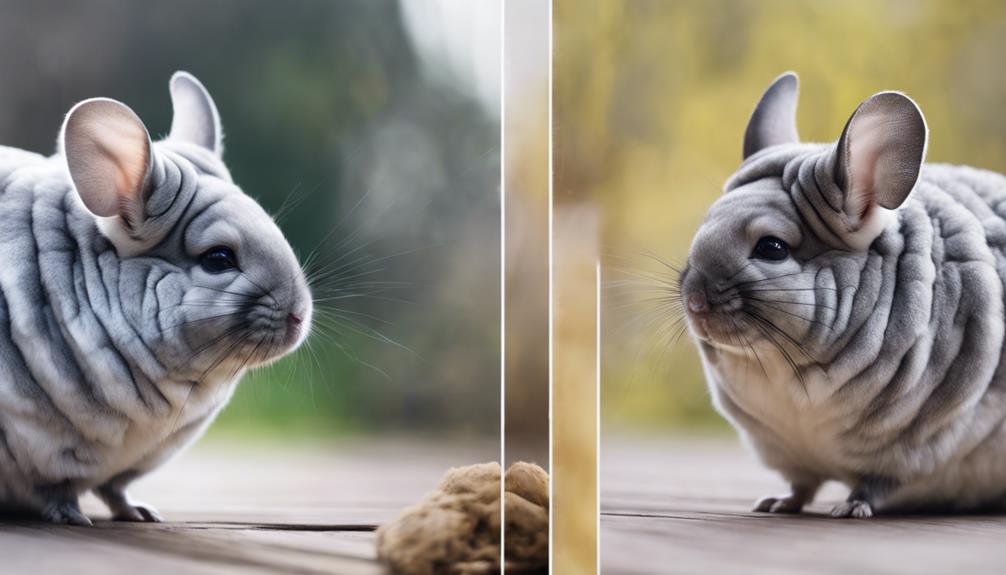
Chinchillas exhibit a natural fur shedding cycle, known as molting, which involves the replacement of old fur with new growth. This process is influenced by various factors such as temperature variations, light exposure, and hormonal changes.
Seasonal hair loss in chinchillas is particularly notable, with molt patterns often corresponding to changes in daylight hours and environmental conditions.
Fur Shedding Cycle
The fur shedding cycle of chinchillas is a pivotal aspect influencing the overall quality and appearance of their fur. Chinchillas undergo a shedding process that impacts their fur growth rate. Understanding this cycle is crucial for maintaining optimal fur quality.
- Frequency: Chinchillas typically shed their fur twice a year, with the shedding process lasting several weeks each time.
- Consistency: A consistent shedding pattern indicates a healthy chinchilla with good fur quality.
- Nutritional Impact: Diet plays a significant role in the shedding cycle, affecting the fur growth rate and overall health of the chinchilla.
- Grooming: Regular grooming not only helps manage shedding but also promotes healthy fur growth and quality.
Seasonal Hair Loss
During the molting process, chinchillas exhibit distinct seasonal hair loss patterns influenced by environmental factors and genetic predispositions. Hormonal regulation plays a crucial role in triggering these shedding patterns. Chinchillas typically experience two major molting periods each year, shedding their thick winter coat in preparation for the warmer months. Providing a balanced diet rich in essential nutrients is key to supporting healthy fur growth and minimizing excessive fur loss during molting. Dietary supplements can help maintain the chinchilla's coat quality and promote a smooth shedding process. By understanding the hormonal regulation and dietary requirements of chinchillas, owners can effectively manage seasonal hair loss and ensure their pets maintain a luscious and healthy fur coat.
| Hormonal Regulation | Fur Loss |
|---|---|
| Spring | Moderate |
| Fall | Heavy |
Genetic Health and Fur Quality
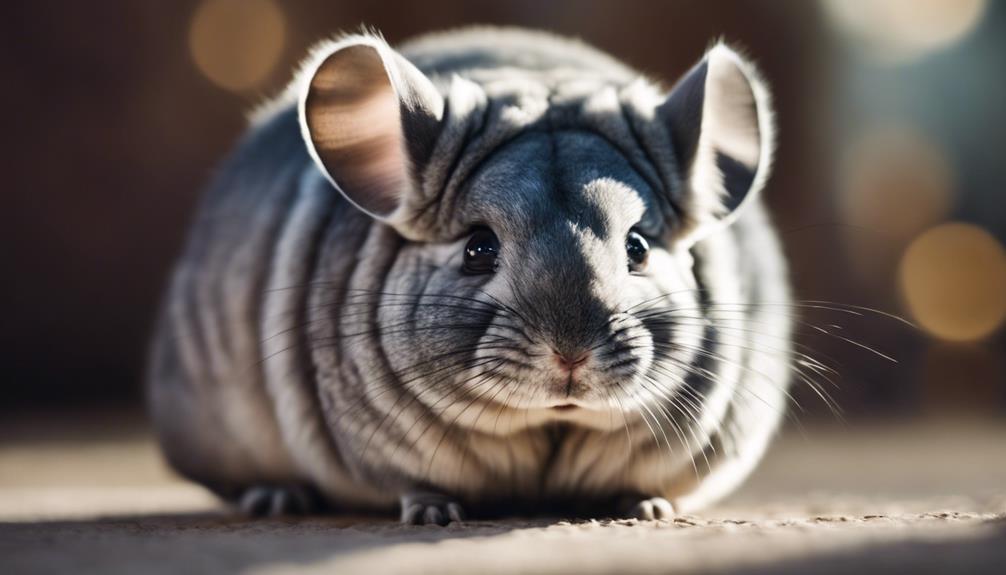
Understanding the interplay between specific genetic markers and fur characteristics is crucial in assessing the overall genetic health and fur quality of chinchillas. Genetic health plays a significant role in determining the condition of a chinchilla's fur.
Here are some key genetic factors that can impact fur quality:
- Gene Variants: Different gene variants can influence fur texture, color, and density.
- Inherited Disorders: Genetic mutations may lead to inherited disorders affecting fur quality.
- Coat Length Genes: Genes responsible for determining coat length can affect the overall appearance and quality of the fur.
- Pigmentation Genes: Genetic variations in pigmentation genes can impact the color intensity and pattern of a chinchilla's fur.
Environmental Factors Impact
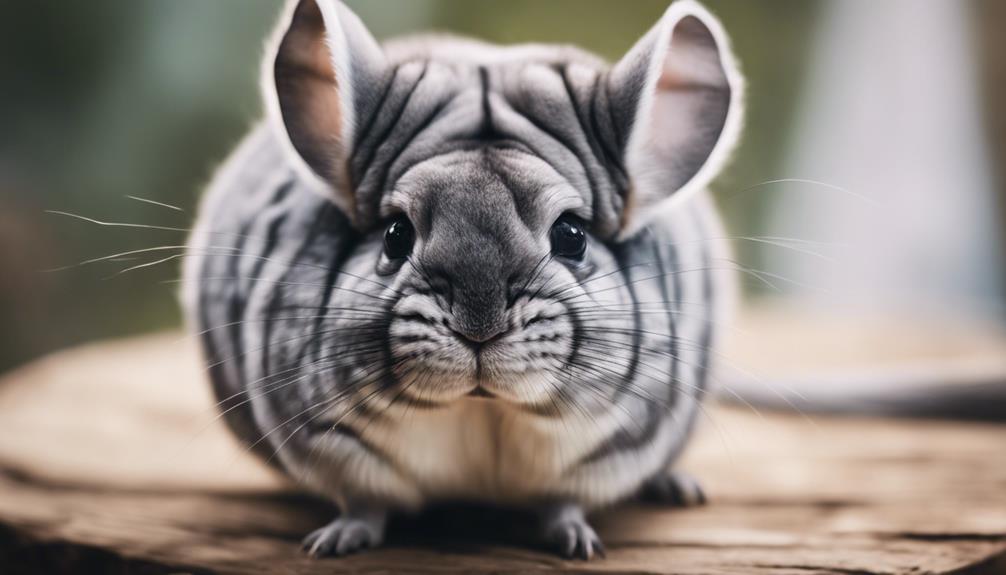
Exploring how external factors impact chinchilla fur quality reveals a nuanced interaction between genetic predispositions and environmental influences. Diet plays a crucial role in fur quality; chinchillas require a diet rich in hay and limited in fats to maintain a healthy coat. Grooming practices are equally vital, as regular dust baths help chinchillas maintain their fur's cleanliness and texture.
Furthermore, environmental factors like cage size and temperature regulation significantly impact fur quality. Chinchillas need spacious cages to exhibit natural behaviors and prevent stress-induced fur loss. Proper temperature control is essential, as chinchillas are sensitive to heat and humidity, which can lead to fur matting and dermatological issues.
Frequently Asked Questions
How Do Genetic Traits in Chinchillas Affect Their Temperament and Behavior?
When examining temperament analysis in chinchillas, understanding how genetic traits influence behavior is crucial. Breeders consider genetic testing for behavior modification. Selective breeding based on these traits can help promote desirable behaviors and enhance chinchilla temperament.
Can Chinchilla Fur Quality Be Influenced by Their Diet and Nutrition?
Chinchilla fur health is significantly impacted by diet. Nutritional intake directly influences fur density and quality. Ensuring a balanced diet rich in essential nutrients is crucial for maintaining optimal fur condition and overall well-being.
Are There Any Specific Genetic Factors That Determine a Chinchilla's Susceptibility to Certain Health Issues?
Genetic factors play a crucial role in chinchillas' health risks. Specific genetic markers can determine disease susceptibility, influencing their likelihood of developing certain health issues. Understanding these genetic traits can help in managing and preventing potential health concerns.
Do Chinchillas With Certain Genetic Traits Require Specialized Grooming or Care Routines for Their Fur?
Chinchillas with certain genetic traits may benefit from specialized grooming routines tailored to their fur type. By understanding coat color genetics and preferred textures, breeders can develop strategies to enhance fur quality through appropriate care techniques.
Can Genetic Traits in Chinchillas Affect Their Overall Lifespan or Reproductive Capabilities?
Genetic traits in chinchillas can indeed impact their overall lifespan and reproductive capabilities. Breeding concerns may arise due to specific genes affecting health risks. Understanding these genetic factors is crucial for ensuring chinchilla welfare and successful breeding outcomes.



